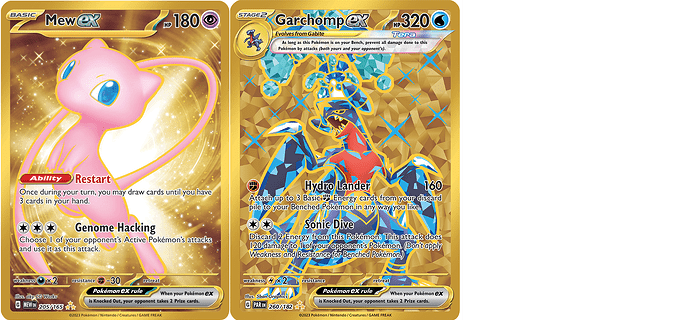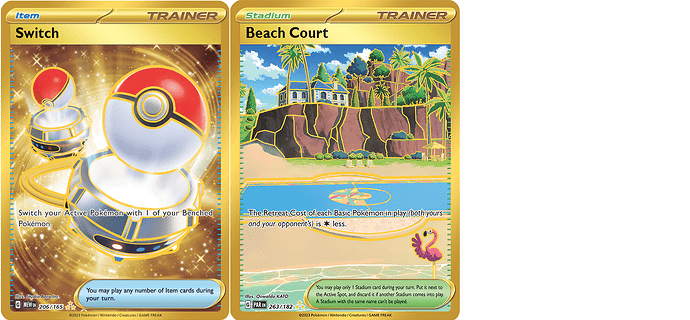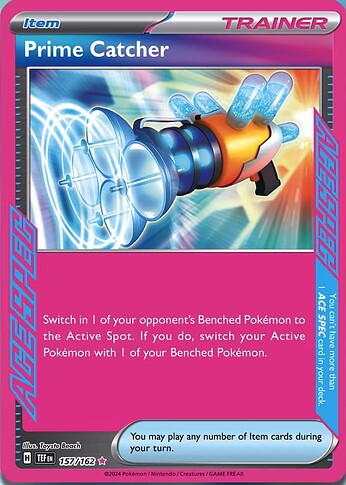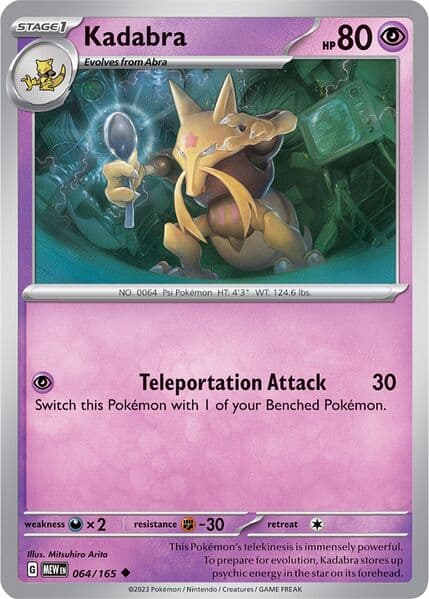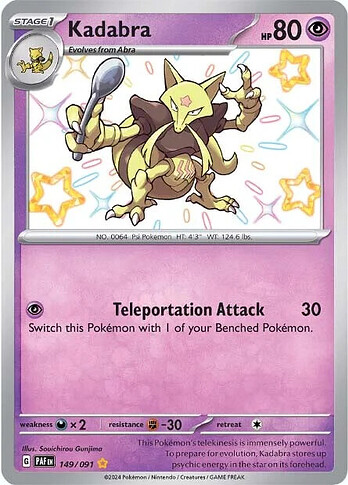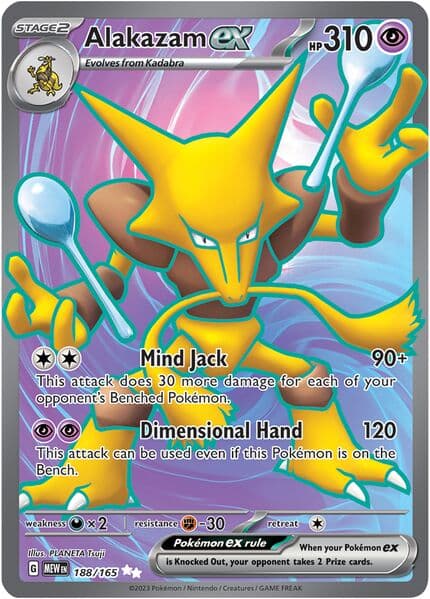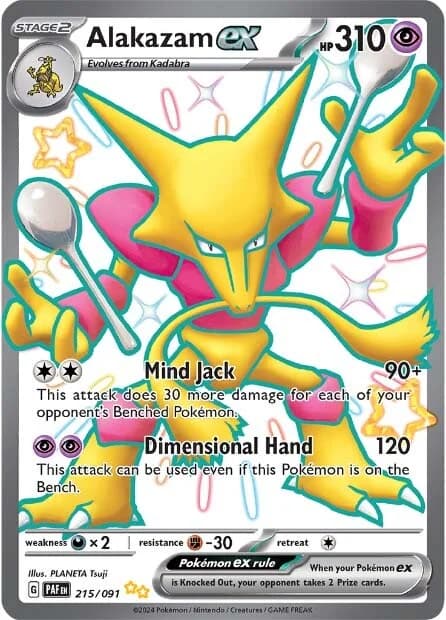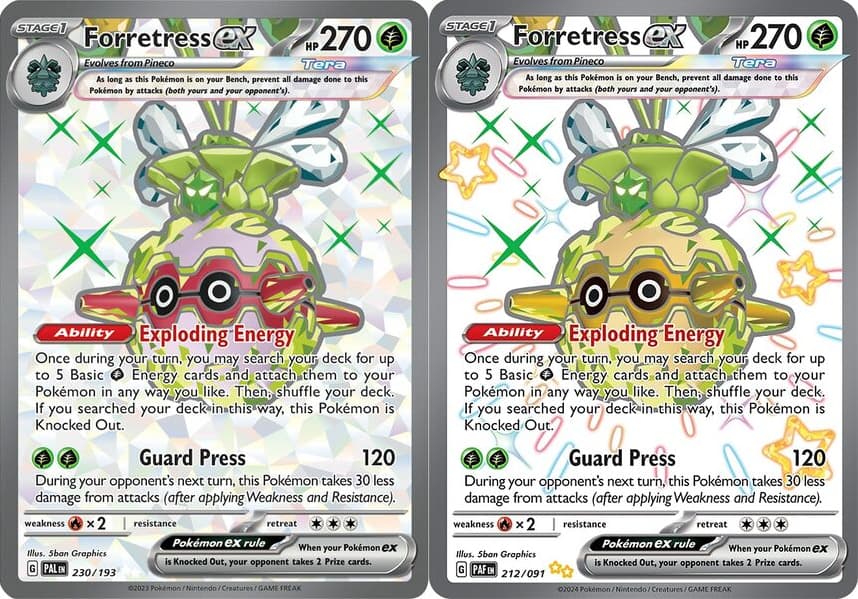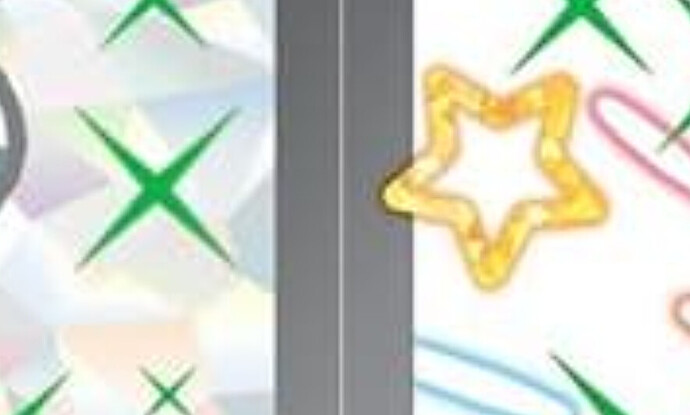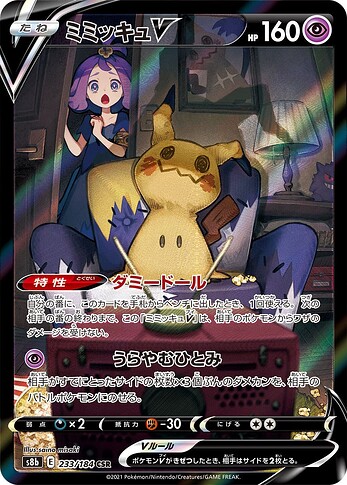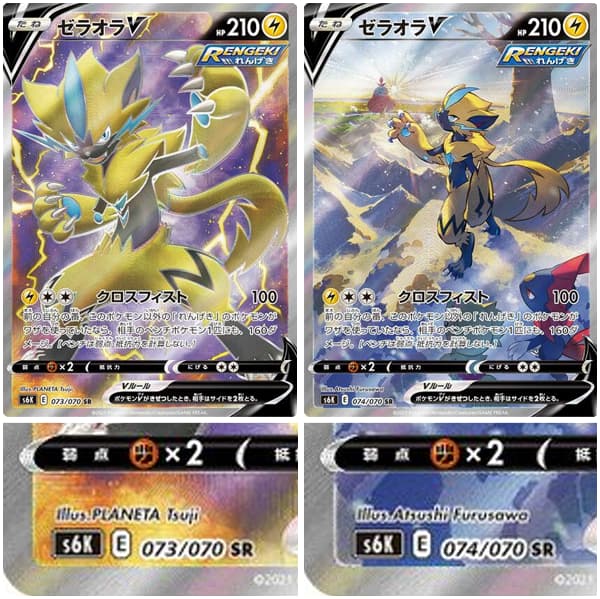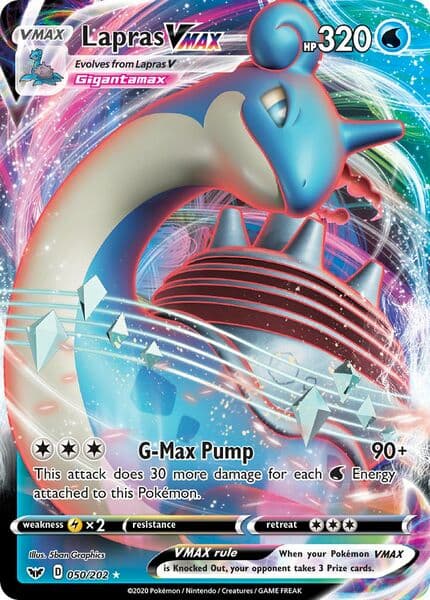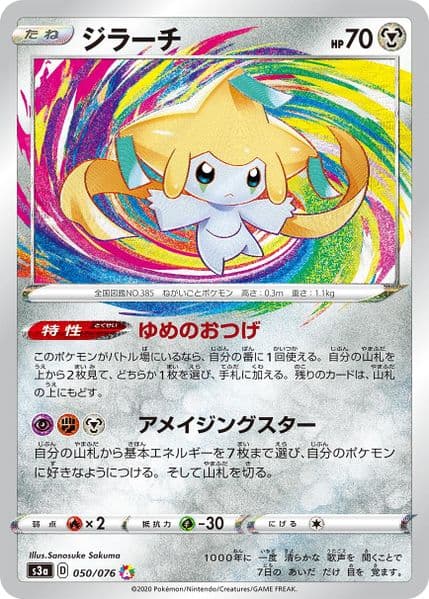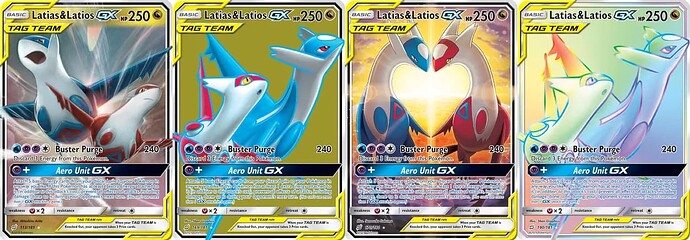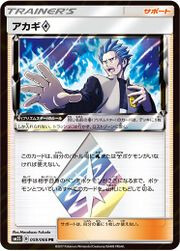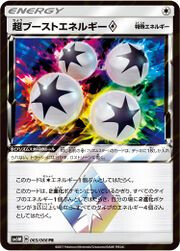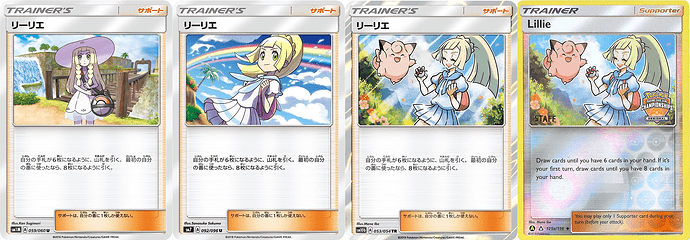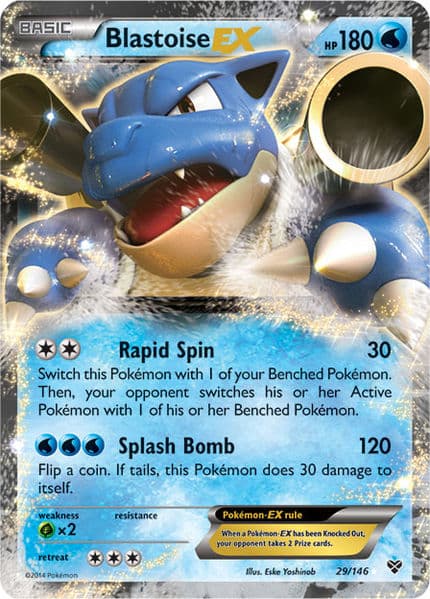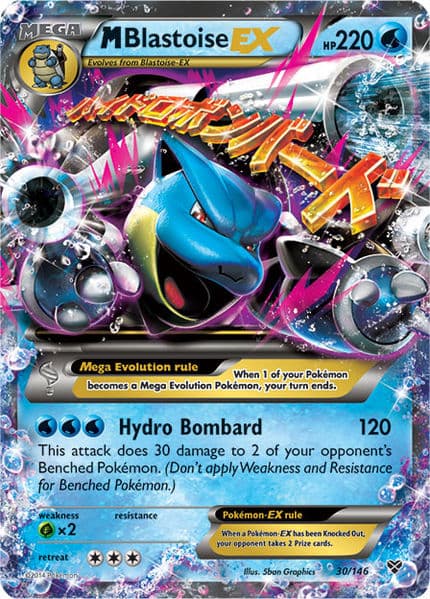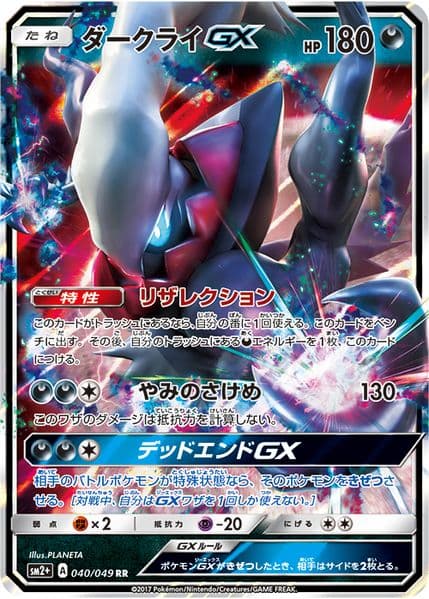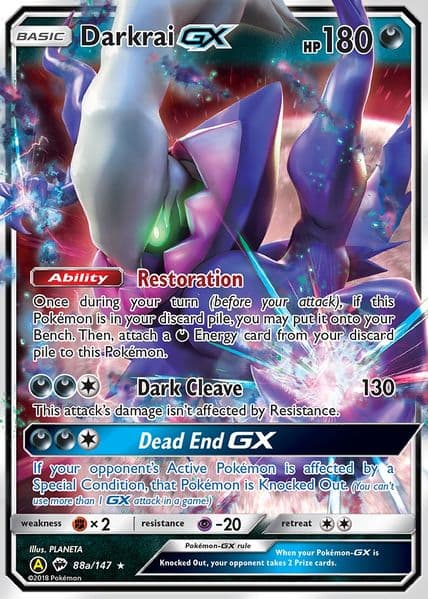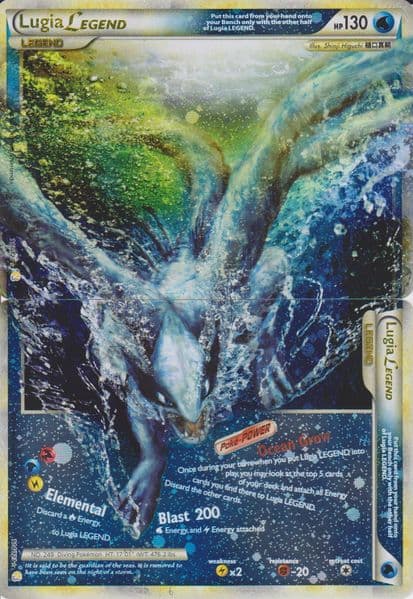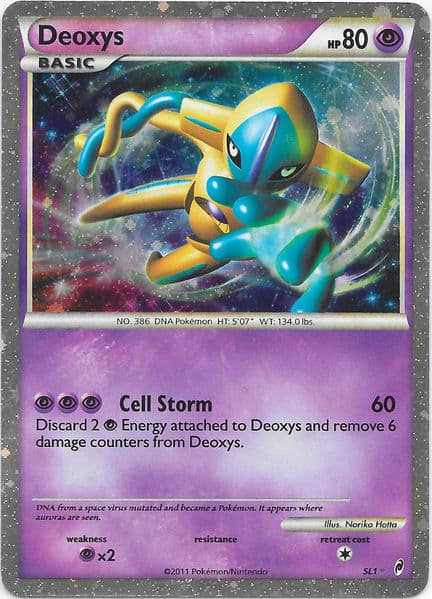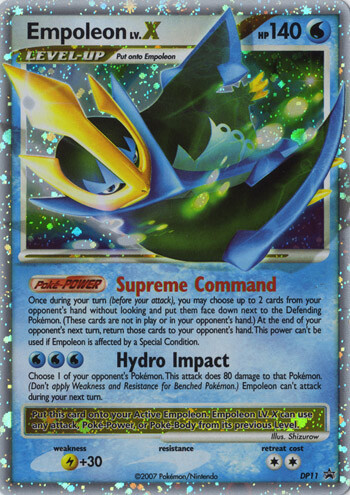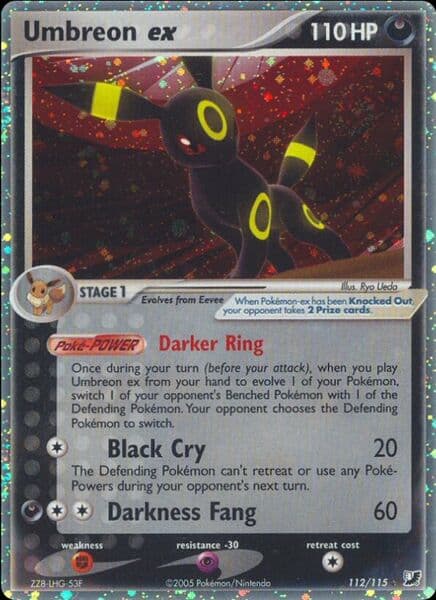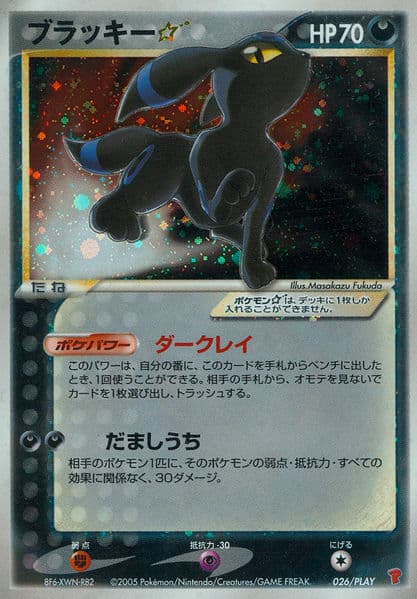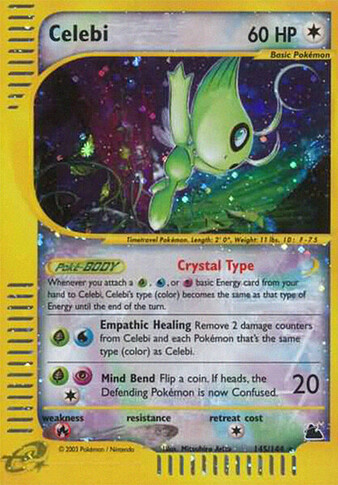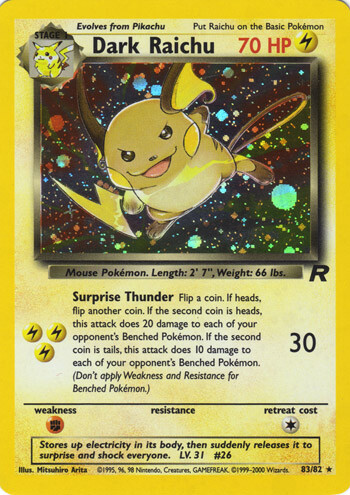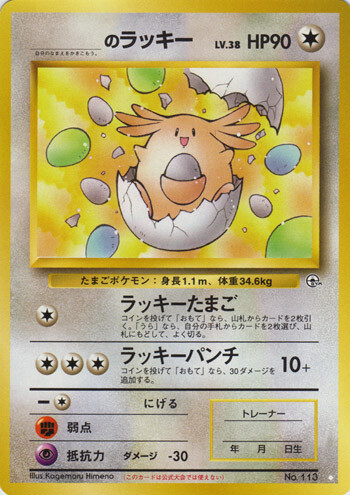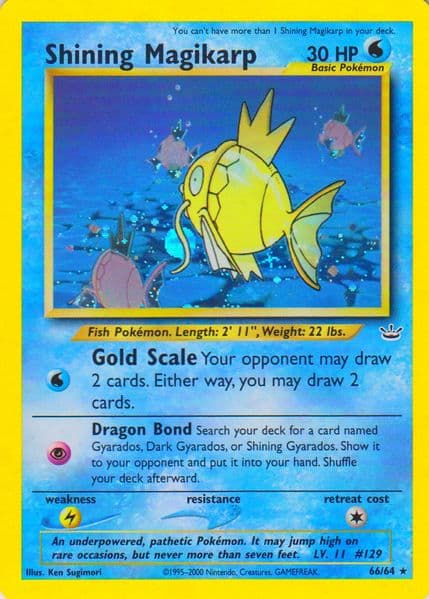Click Here for the Set Order Structure version of this article
Current Rarity System
Main Set
| TPC Rarity |
TPCI Rarity |
||
|---|---|---|---|
| Common | Common | ||
| Uncommon | Uncommon | ||
| Rare | Rare | ||
| Double Rare | Double Rare | ||
| Ace Spec | Ace Spec |
Secret Rares
| TPC Rarity |
TPCI Rarity |
||
|---|---|---|---|
| Art Rare | Illustration Rare | ||
| Super Rare | Ultra Rare | ||
| Super Art Rare | Special Illustration Rare | ||
| Ultra Rare | Hyper Rare |
Common ![]() | Uncommon
| Uncommon ![]() | Rare
| Rare ![]()
Illustration Rare ![]()
[Pokemon] Double Rare ![]() | Ultra Rare
| Ultra Rare ![]() | Special Illustration Rare
| Special Illustration Rare ![]()
[Trainer] Ultra Rare ![]() | Special Illustration Rare
| Special Illustration Rare ![]()
[Pokemon] Hyper Rare ![]()
[Trainer] Hyper Rare ![]()
[Item] Ace Spec ![]()
Specialty Set Rarities
| TPC Rarity |
TPCi Rarity |
||
|---|---|---|---|
| Shiny | Shiny Rare | ||
| Shiny Super Rare | Shiny Ultra Rare |
Shiny Rare ![]()
Shiny Ultra Rare ![]()
- Note: Shiny Full Arts are extremely similar in appearance to Tera ex Full Arts which have a “shattered”/“cracked ice” texture and do not have the gold stars
Rarity System Overhauls
these are changes that are still being used in the current system more or less
SV Changes
New Rarities to align with TPC
 - Double Rare
- Double Rare (Pokemon ex) - Ultra Rare
- Ultra Rare (Full Arts) - Illustration Rare
- Illustration Rare (Special Art w/o Texture) - Special Illustration Rare
- Special Illustration Rare (Special Art w/ Texture) - Hyper Rare
- Hyper Rare(Gold Cards) - Shiny Rare
- Shiny Rare (Baby Shiny) - Shiny Ultra Rare
- Shiny Ultra Rare (Shiny Full Art)
now all languages would place anything greater than a Double Rare as a Secret Rare after the main set
End of Rainbow Cards
(HR) Hyper Rare (TPC) / Rainbow Rares (TPCI) are replaced by a revamped version of the SARs introduced in VSTAR Universe (TPC). These maintain a glittery effect similar to SwSh's HR(TPC)/Rainbow Rare (TPCI) cards, but now would feature unique artwork that differs from the Full Art version.
End of Non-Holo Rares (For all Languages)
Ace Spec - ![]()
(TPC) ![]()
(TPCI)
Although originally introduced in the BW era, now they have their own distinct rarity
SwSh Changes
New Special Art Rarities
SwSh era helped solidify the presents of "Special Arts", but with it brought a disagreement on what to call them. Thankfully, TPC introduce much needed new rarities for "Special Arts"
 - Character Super Rare
- Character Super Rare (TPC)
An addition to the SM incarnation of Character Rares, notably, these have texture
 - Art Rare
- Art Rare (Special Art w/o texture) - Super Art Rare
- Super Art Rare (Special Art w/texture)
Before the introduction of the official SAR/AR, there was a disagreement on what to call these types of cards. While the term “Alt Art” or “Alternate Art” (AA) would become popular in the west, the term “Special Art” (SA) would be more commonly used in the east.
- While colloquially, “Alt/Alternate Art” is widely understood as a descript for these types of cards, it can be confused by the official use of “Alternate Art” which is used for a card that has been reprinted with different art, often used as a Promo (Previously given the
symbol as a distinction)
Alakazam ex | Alakazam ex Alternate Art Promo
Because there was no official rarity yet, the “AA” or “SA” would be added as a suffix at the end of the existing rarity when describing a card if applicable.
Zeraora V SR | Zeraora V SR (SA)
SM Changes
Full Art Gold Cards
- Pokemon
- Trainers
(Items/Stadiums)
New Rarities for Shinies (TPC)
introduced in GX Ultra Shiny (TPC) / Hidden Fates (TPCI), Pokemon created two new rarities alongside these new types of Shinies. There has been one of these types of sets for each generation since (up through SV so far)
 - Shiny
- Shiny (Baby Shiny) - Shiny Super Rare
- Shiny Super Rare (Shiny Full Art)
Throughout all 3 iterations so far, they have commonly had a silvery-textured background in the picture box behind the Pokemon.
Character Arts
A special art reprint of a Pokemon with artwork prominently featuring a Trainer
 - Character Rare
- Character Rare (TPC)
(TPCI)
XY Changes
Double Rare
A new rarity was introduced for the two prize/generational gimmick cards. In this example, Pokemon EX, but in the future it would also be for GX, V, and ex (SV)

(TPC)
BW Changes
Rarity Symbol Overhaul (TPC)
TPC introduced a new lettering system for rarities instead of the symbol system used previously (and would be continued to be used by international sets)
 - Common
- Common - Uncommon
- Uncommon - Rare
- Rare - Super Rare
- Super Rare - Ultra Rare
- Ultra Rare
Going forward, all Rares would be Holo in TPC prints, while TPCI would continue having Non-Holo Rares along with Holo Rares
while TPC would not distinguish for Pokemon EX, TPCI would use a White Star
for the big generational gimmick cards going forward such as EX, GX, and Vs
Full Art - ![]()
(TPC) ![]()
(TPCI)
Artwork covering the entire card with the character in some sort of pose
- Pokemon -
usually with a simple background - Supporter -
usually a more integrated background illustration
Gold Cards (eventually*) - ![]()
(TPC) ![]()
(TPCI)
This designation would be for cards that are rarer than Full Arts and eventually would be recognizable by having some sort of gold coloration
ADV/EX Changes
Ultra Rares (the precurser to double rares) - ![]()
This era introduced the first "Two Prize" Pokemon and thus, "Ultra Rare" card concept, Pokemon ex which would have a greater rarity than normal Holo Rares. While at this time it would be exes, in the future, this would be whatever the generational gimmick is, e.g.: Lv.X, EX, GX, V, ex (SV)
Discontinued/Revised Rarities
note: just because there is something here now, doesn't mean it wont come back in the future. The Scarlet and Violet era has already brought back Pokemon ex, Ace Specs, and the SM/SWSH Shinies
Sword & Shield
V (The Generational 2-Prize Gimmick) - ![]()
(TPC) ![]()
(TPCI)
VMAX, V-Union, and V-STAR - ![]()
(TPC) ![]()
(TPCI)
the Triple Rare rarity only lasted through the SwSh era. This was for VMAX and V-Union Pokemon were worth three prize cards when knocked out.
V-STAR Pokemon were powered down a bit and only worth two prize cards, but still maintained this rarity
Amazing Rare - ![]()
TG (Trainer Gallery - TPCI)
a subset spread out across SwSh year 3 TPCI sets which featured the CHR, CSR, and UR cards from VMAX Climax as well as the additional CHR and CSR cards released in TPC's Enhanced Expansion Sets (s9a, s10a, and s11a)
Radiant Pokemon - ![]()
(TPC) ![]()
(TPCI)
GG (Galarian Gallery - TPCI)
similar to the Trainer Gallery, this was a subset created as an answer to a TPC set (VSTAR Universe) which had the newly introduced AR and SAR rarities.
Sun & Moon
GX (The Generational 2-Prize Gimmick) - ![]()
(TPC) ![]()
(TPCI)
Rainbow Cards
Discontinued after SwSh and replaced by SARs in Scarlet and Violet. This Rarity was between regular "Full Arts" and Gold Cards
 - Hyper Rare
- Hyper Rare (TPC) - Rainbow Rare
- Rainbow Rare (TPCI)
GX → GX Full Art → GX Rainbow Rare
Tag Team GX
introduced in the last year of SM, these were still Pokemon GX, except now they were more powerful and worth 3 Prize Cards - a precursor to SwSh's Triple Rare VMAX Pokemon.
Tag Team GX Pokemon also were the first consistent implementation of Special Art variations of the "Full Art" Rarity which thankfully was cleared up by the end of SwSh.
(Tag Team)GX → GX Full Art → GX Special Art → GX Rainbow Rare
Shining (Shining Legends) - ![]()
Prism Star - ![]()
(TPC) ![]()
(TPCI)
SV (Shiny Vault - TPCI)
Part of the "Fates" sets (Hidden Fates and Shining Fates), but discontinued after SwSh
Trainer Rare - ![]()
(TPC)
In the last year of SM, alternate art variations of popular/powerful trainers were reprinted. In Japan, these would be a completely new rarity - TR - placed at the end of the main set; but for TPCI, these would be Alternate Cards ![]()
- often used as stamped promos for competitive events.
Regular Print → ![]() /
/ ![]()
Some popular cards received "regular" alternate art reprints as well as these special alternate arts
Original /
/  → Alternate Art
→ Alternate Art  /
/  → Alternate Art
→ Alternate Art  /
/ 
XY
M EX (Mega EX) - ![]()
(TPC) ![]()
(TPCI)
XY continued the EX mechanic, and brought with it a new Mega EX mechanic, however these both shared the new Double Rare rarity
BREAK
the second half of XY introduced the BREAK mechanic, but the rarity system remained the same as M EX and EX
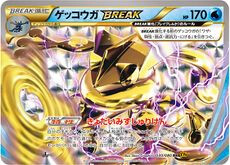
Alternate Cards (Alternate Arts) - ![]()
Used to distinguish a card that has an alternate artwork of a previous card, typically a promo. This designation would continue through SM, but discontinue by SwSh.
Some Alternate Cards were special arts, but most were just slight variations of the original card
BW
EX (The Generational 2-Prize Gimmick)

(TPC did not distinguish these from Rares until XY)
(TPCI)
Shiny Secret Rares

(Ultra Rare - TPC)
(Secret Rare - TPCI)
for BW, these would be textured shiny alternate arts, eventually with gold accents on the card - this new rarity would be the precursor to Gold Cards
L/HGSS
LEGEND - ![]()
SL (Call of Legends) - ![]()
Subset that featured Alternate Art Shing Pokemon with a foil border similar to the previous LV.X from DP/Pt and ex from ADV-PCG/EX
DPt
LV.X (The Generational 2-Prize Gimmick) - ![]()
Super Rares (TPC) / Secret Rares (TPCI)
These were reprints of original cards ranging from competitive staples, popular pokemon cards, and promos.
- Japanese versions had a glossy surface and all languages had a white rarity symbol (
 ,
,  ,
,  )
)
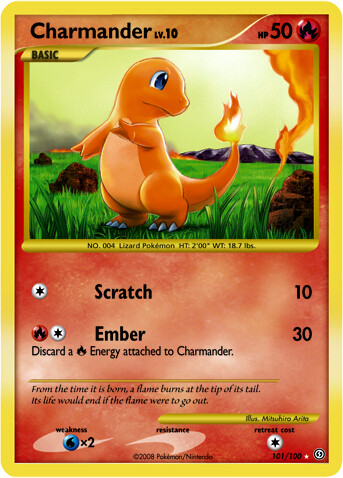
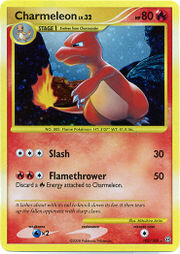
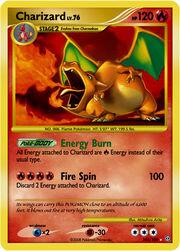
Platinum era Shinies
Part of the "SH" Subset in TPCI sets from Stormfront to Arceus, they were always a fully foil card (mirror foil in TPCI and a glossy surface with a star foil pattern in Japan). Otherwise, no distinguishable rarity symbol
both regular and shiny versions were drawn by the same artist
ADV-PCG/EX
ex - ![]()
the first two-prize generational gimmick. This type of card would have a rarity higher than Holo Rares, but lower than Secret Rares
Pokemon ex would return in the SV era with the same mechanics, but with a visual overhaul
Pokemon Star ![]()
(Gold Stars) - ![]()
A mechanically identical version would return in the SwSh era, but as a new name (Radiant Pokemon) and a completely different aesthetic.
e-Series
Crystal Pokemon
- Japanese versions used the white star
 symbol and had a glossy surface with an additional glittery foil layer
symbol and had a glossy surface with an additional glittery foil layer
Original Era/Neo/Old Back
Secret Rares (International) / Super Rares (Japan)
- For international sets, these would have a card number larger than the set number, however for Japan, they would just be noted by a white rarity symbol such as a
 , although there were also super rares with the uncommon symbol
, although there were also super rares with the uncommon symbol 
Double Black Star (Japan) - ![]()
While not used in sets, this symbol is typically only used on Trophy Cards
Triple Black Star (Shining) - ![]()
the international versions of Shining Magicarp and Shining Gyarados did not have this rarity symbol, but instead were marked as Secret Rares with the card number exceeding the set number; while Japanese versions had a glossy surface and an additional glittery holo layer
Definitions/Disclaimers
Rarity
- In this case, refers to the rarity symbol at the bottom of the card or otherwise a unique card style that is different from others within its type (example: a Pokemon that is different in card style from other Pokemon in the same set).
I will not be speaking on rarity in the sense of how rare something is in this article
TPC
in this article refers to The Pokemon Company who as of now prints cards in Japanese, Traditional Chinese, Simplified Chinese, Thai, and Indonesian cards.
- TPC did not always print cards for these languages. There may be some discrepancies for non-JP Asian language cards.
- I have not bothered to investigate between all of the various eras and iterations of the Pokemon Company’s Corporate Hierarchy. Example, Oldback cards may be simply referred to as Japan.
- also, AFAIK, Korea still prints their own cards and their rarity system may vary from the examples I list below.
TPCI
refers to The Pokemon Company International which prints the cards for all other languages not covered by TPC.
- similar to with TPCI, older eras may simply be referred to as “international” instead of TPCI since I’m pretty sure the breakdown we have now was not the case in the early few eras (nor is it relevant to the overall goal of this article.
Adjectives
Shiny/Shining
- refers to a Pokemon with its alternate coloration
Texture
- refers to a raised effect on a card that differs from other cards within the set of different rarities

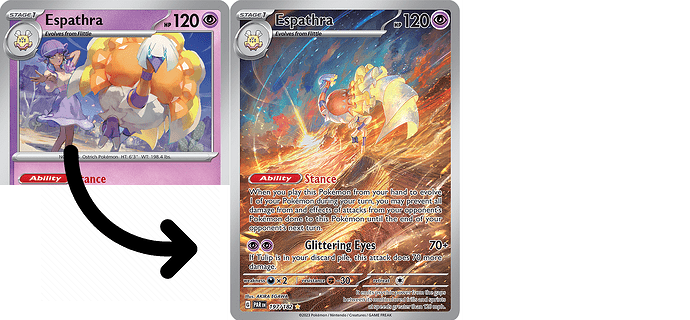
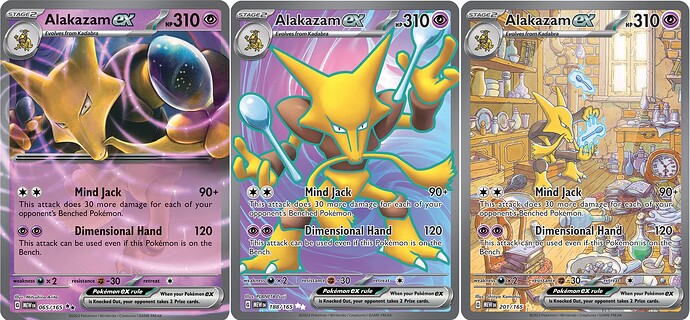
![Ultra Rare, Special Illustration Rare [Supporter]](https://efour.b-cdn.net/uploads/default/optimized/3X/d/e/dee15cba563af0b08b03b211dac6cb7316c0e767_2_690x320.png)
